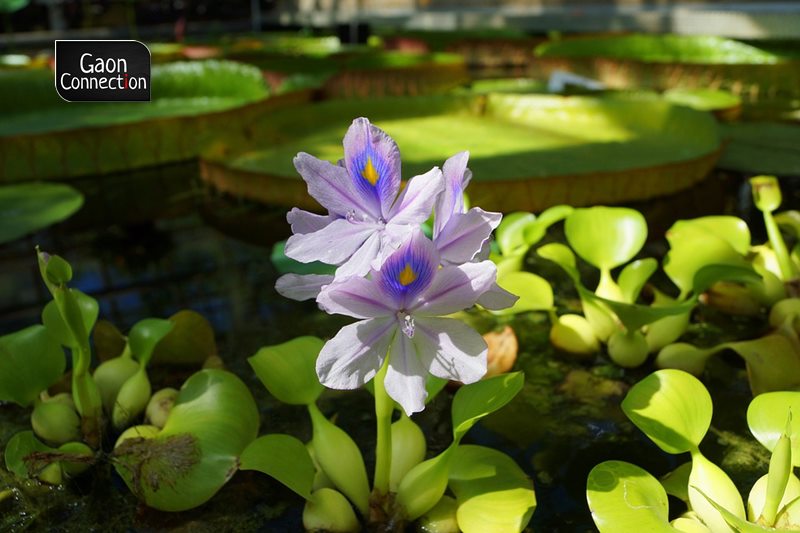Water hyacinth — a nuisance for water bodies, can now be used to produce organic fertilisers
The much reviled water hyacinth is being put to good use thanks to agriculture scientists of Bihar Agriculture University in Bhagalpur, who say it makes an excellent vermicompost


Photo: Max Pixel
The water hyacinth is a much maligned weed growing in water bodies that has defeated many many attempts to clear it. It has the propensity to grow back in a far greater volume than ever, whenever it is pulled out. But, in an innovative move, scientists of the Bihar Agriculture University in Sabour, Bhagalpur, have found ways to befriend the water hyacinth and make it useful.
Also Read: Water hyacinth gets a makeover as yoga mats
“The more you clear the water hyacinth, the more it will grow back and spread in the waterbody,” SC Paul, agricultural scientist in the university, told Gaon Connection. He said there was a way of putting the weed to good use by converting it into vermicompost.
The water hyacinth is pulled out from its roots and its green portion is used to make the compost, Paul said. Cutting off the roots helps the weed decompose faster. Earthworms that play an important role in vermicomposting do not eat the roots, he said.
Also Read: Chhattisgarh fuels rural economy using cow dung; also makes vermicompost more accessible
“The water hyacinth is dried as otherwise it will rot and smell bad and adversely affect the earthworms too,” Paul explained. Once the weed is dry and brown, it is mixed with cow dung. The dung is first diluted into a slurry to which the dried water hyacinth is added and mixed well. Once this is done, it can be stored in tanks.
According to Paul, once the water hyacinth mixture is ready, after four to five days the earthworms are introduced into it. “There are two kinds of earthworms that are particularly beneficial. They are the Eudrilus eugeniae and Eisenia fetida variety, and perfect for vermicomposting,” Paul explained.

Once the earthworms are introduced to the mixture, it is kept for another four or five days. It is important to keep the mixture moist and soft so that the earthworms can easily ingest them. After three months the compost is ready for use.
For those who cannot get these two varieties of earthworm, the agricultural scientist had an alternative for the farmers. He said, if banana stems are cut and kept in the shade for two to three months, a variety of earthworms will make their home in the stems. These could be used for vermicomposting too. But this process will take a little longer. And sooner the earthworms are added to the water hyacinth and cow dung mixture, the faster the vermicompost will be made, Paul said.
“The farmers who take to making vermicompost from water hyacinth will not just benefit their own crops, but can also earn an extra income by selling it. We are selling the vermicompost at the University at eight rupees a kilo,” Paul concluded.
Read the story in Hindi

